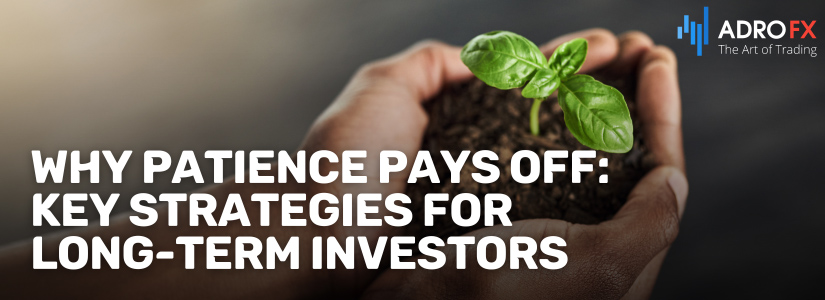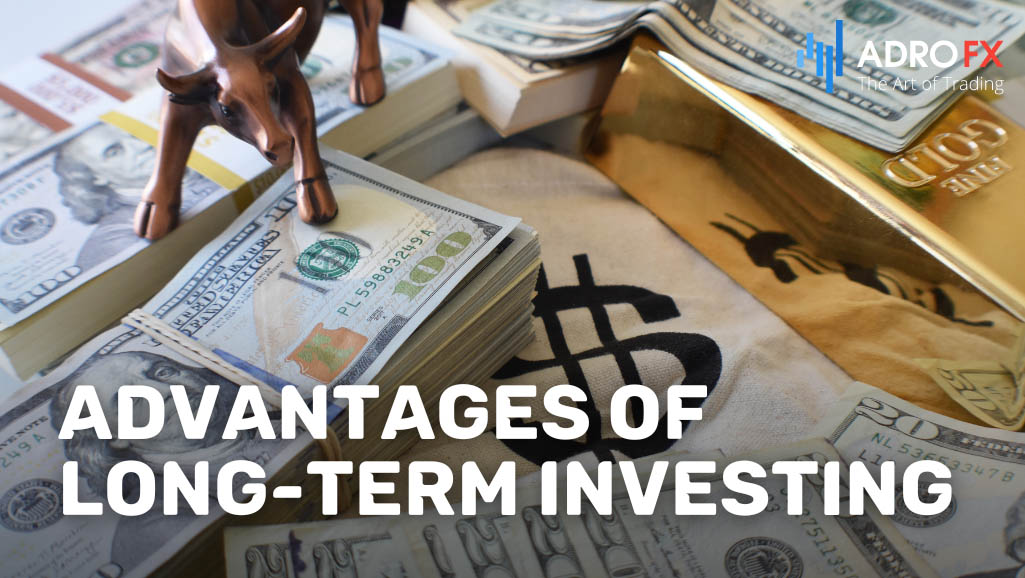Why Patience Pays Off: Key Strategies for Long-Term Investors

Investing is a crucial element of building wealth and achieving financial security. Among the various strategies, long-term investing stands out as a reliable and often lucrative approach. Unlike short-term trading, which aims to profit from market movements over days, weeks, or months, long-term investing focuses on holding assets for several years or even decades. This approach relies heavily on patience, allowing investments to grow and appreciate over time.
Patience is a cornerstone of long-term investment strategies. It involves more than just waiting; it requires maintaining composure and confidence in one's investment choices despite market volatility and economic uncertainties. The core of long-term investing lies in harnessing the gradual yet substantial benefits of compounding returns, reduced transaction costs, and lower tax liabilities. A patient investor is less likely to make impulsive decisions, reducing stress and increasing the likelihood of achieving financial goals.
Understanding Long-Term Investing
Long-term investing entails purchasing and holding assets such as stocks, bonds, real estate, or mutual funds for an extended period, usually five years or more. The main objective is to benefit from value appreciation over time, generate income, and reinvest earnings. This strategy's extended time horizon allows investments to grow and withstand short-term market fluctuations. Long-term investors focus on assets with strong growth potential, avoiding quick, speculative gains. This approach leverages the power of compounding, where reinvested earnings generate additional returns, leading to exponential growth. With lower asset turnover, long-term investing minimizes transaction costs and capital gains taxes.
In contrast to short-term investing, which aims to profit from market movements over shorter periods, long-term investments are generally more stable. Short-term investments, often held for days, weeks, or months, are typically more volatile and risky due to the unpredictable nature of short-term market fluctuations. While long-term investments still carry risk, they have the potential to recover from short-term downturns. Short-term investors frequently trade assets, incurring higher transaction costs, whereas long-term investors trade less frequently, thus incurring fewer costs. Moreover, short-term gains are typically taxed at higher rates than long-term gains, making long-term investing more tax-efficient.

Advantages of Long-Term Investing
Long-term investing offers several compelling benefits, making it an attractive strategy. One of the most significant advantages is the potential for compounding returns. Compounding occurs when the earnings from an investment generate additional earnings over time, leading to exponential growth. The longer the investment period, the more pronounced the compounding effect. Additionally, with a lower frequency of buying and selling, long-term investors incur fewer transaction fees, which can diminish returns over time. Regarding tax implications, long-term capital gains are usually taxed at a lower rate compared to short-term gains, resulting in more favorable after-tax returns.
This investment approach also provides stability and reduces stress. It does not require constant market monitoring and frequent decision-making, allowing investors to maintain a more stable and composed approach, avoiding impulsive actions. Long-term investing aligns well with significant financial goals such as retirement, funding education, or purchasing a home, offering a structured path to achieving these objectives.
Understanding the principles and benefits of long-term investing highlights the vital role of patience in this strategy. By adopting a long-term perspective, investors can harness the power of compounding, enjoy lower costs and taxes, and confidently navigate market fluctuations.
Why Patience is Essential in Long-Term Investing
Market Volatility
Financial markets are naturally volatile, with asset prices fluctuating due to economic data, geopolitical developments, and investor sentiment. This volatility is especially pronounced in the short term, causing sharp increases and decreases in asset values. Long-term investors recognize that these fluctuations are an inherent part of the market cycle. By exercising patience and avoiding impulsive reactions to short-term market movements, they can prevent making rash decisions that might result in losses. Instead, they weather these fluctuations, giving their investments the necessary time to recover and grow. Patience ensures that investors remain committed to their long-term strategy, reducing the risk of panic selling during downturns and missing out on potential recoveries.
Compounding Returns
A key advantage of long-term investing is the power of compounding returns. Compounding happens when the earnings from an investment generate additional earnings over time, creating a snowball effect that significantly boosts the investment's value. This process requires time to maximize its potential. The longer the investment period, the more significant the compounding effect becomes. Patience is essential to fully harness this benefit. By remaining invested over many years, investors enable their returns to compound, greatly amplifying their investment's growth. Even modest annual returns can lead to substantial wealth accumulation when compounded over decades.
Behavioral Finance
Behavioral finance examines how psychological factors and emotions influence investor behavior and decision-making. Emotions like fear and greed can lead to irrational investment choices that deviate from a well-devised strategy. For instance, during market downturns, fear can drive investors to sell assets at a loss, while greed during bull markets can lead to overconfidence and risky investments. Patience helps mitigate these emotional reactions. By adopting a long-term perspective and focusing on their broader financial goals, investors can maintain discipline and make more rational decisions. Understanding and managing one's emotional tendencies can lead to more consistent and successful investment outcomes.

Strategies to Cultivate Patience in Investing
Setting Realistic Expectations
To cultivate patience in investing, it is crucial to set realistic financial goals. Recognizing that significant returns take time helps investors stay focused and dedicated to their long-term strategy. Clear, attainable objectives provide a roadmap for investment decisions and allow investors to measure progress over an appropriate time frame. Realistic expectations include understanding that markets will fluctuate, but disciplined investing is likely to yield positive results over time.
Regular Monitoring but Not Overreacting
While regularly monitoring one's investment portfolio is important, it is equally crucial to avoid overreacting to short-term market movements. Investors should establish a routine for portfolio reviews, such as quarterly or semi-annually, to ensure their investments align with their financial goals. This method allows for informed adjustments without being influenced by daily market volatility. Maintaining a balanced perspective and avoiding impulsive decisions based on short-term fluctuations help preserve the integrity of a long-term investment strategy.
Diversification
Diversification involves spreading investments across various asset classes, sectors, and geographies to manage risk and reduce anxiety. A well-diversified portfolio can mitigate the impact of poor performance in any single investment, thereby enhancing overall stability. Diversification reduces the risk of significant losses and provides a smoother investment journey, contributing to a more patient and confident investment approach. By spreading risk, investors can feel more secure about their long-term prospects.
Education and Continuous Learning
Remaining informed about market trends, economic indicators, and investment principles is vital for maintaining patience in long-term investing. Continuous education helps investors build confidence in their decisions and understand the rationale behind market movements. Learning about historical market performance, the benefits of compounding, and the principles of diversification enables investors to better appreciate the long-term nature of their strategy. This knowledge helps reduce fear and uncertainty, empowering investors to stay the course even during volatile periods.
In conclusion, patience is a cornerstone of successful long-term investing. Understanding market volatility, leveraging the power of compounding returns, and recognizing the psychological aspects of investing all underscore the importance of maintaining a patient approach. By setting realistic expectations, regularly monitoring but not overreacting, diversifying investments, and continuously educating themselves, investors can cultivate the patience needed to achieve their long-term financial goals.
Key Strategies for Long-Term Investors: Case Studies and Examples
Historical instances of successful long-term investments highlight the critical role of patience. Warren Buffett, one of the most renowned investors, is a strong advocate for long-term investing. His strategy of buying high-quality companies and holding them for long periods has led to substantial wealth accumulation. Buffett's investment in Coca-Cola, which began in 1988, is a prime example. Despite market fluctuations, he maintained his position, allowing the power of compounding and the company's growth to generate significant returns.
Index funds also illustrate the benefits of long-term investing. These funds track the performance of a specific market index, like the S&P 500, providing broad market exposure. Over decades, index funds have consistently delivered returns that often surpass those of actively managed funds. Investors who remained invested in index funds during market downturns have benefited from overall market recovery and growth, showcasing the advantages of a patient, long-term approach.
Hypothetical scenarios further underscore the benefits of patience. Imagine an investor who buys a diversified portfolio of stocks and holds them for 30 years. Despite facing several market crashes and economic downturns, the investor does not sell during these uncertain times. Over time, the market recovers and grows, and the investor's portfolio benefits from compounding returns, leading to substantial wealth accumulation. This contrasts with a short-term investor who frequently buys and sells based on market conditions, often incurring higher transaction costs and missing out on long-term market growth.

Common Pitfalls and How to Avoid Them
Panic Selling During Market Downturns
One of the most common investment mistakes is panic selling during market downturns. Fear and uncertainty can drive investors to sell their assets at a loss, only to watch the market rebound shortly after. To avoid this, it's crucial to maintain a long-term perspective and understand that market volatility is a normal part of investing. Keeping emotions in check and focusing on long-term goals can help prevent impulsive decisions.
Trying to Time the Market
Another significant risk is attempting to time the market. Many investors believe they can predict market movements and buy or sell at the optimal moment. However, this strategy is risky and often leads to missed opportunities. Markets are inherently unpredictable, and trying to time them can result in suboptimal returns. Staying invested through all market conditions allows investors to benefit from long-term growth and compounding.
Overtrading
Overtrading can erode long-term returns. Frequently buying and selling assets results in higher transaction costs and potential tax implications. Moreover, overtrading is often driven by emotional reactions to short-term market movements, disrupting a well-planned investment strategy. Adopting a buy-and-hold strategy and limiting unnecessary trades can help preserve returns and maintain focus on long-term objectives.
Conclusion
Patience is a cornerstone of successful long-term investing. Throughout this discussion, we've explored various aspects of long-term investing and the crucial role patience plays in achieving financial goals. Long-term investing is characterized by its extended time horizon, allowing investors to benefit from compounding returns, lower transaction costs, and favorable tax treatment. Unlike short-term trading, which often involves reacting to market fluctuations, long-term investing requires a steadfast commitment to one's investment strategy.
Understanding market volatility is essential for long-term investors. Markets naturally experience ups and downs, but those who remain patient can ride out these fluctuations and avoid the pitfalls of panic selling. Compounding returns, a fundamental benefit of long-term investing, significantly amplify wealth over time, provided investors give their investments the time needed to grow.
Behavioral finance highlights the psychological aspects of investing, showing how emotional biases can undermine investment outcomes. Patience helps mitigate these biases, promoting more rational and disciplined decision-making. By setting realistic expectations, regularly monitoring but not overreacting to market movements, diversifying investments, and staying informed through continuous learning, investors can cultivate the patience necessary for long-term success.
Historical examples, such as Warren Buffett's investment strategies and the performance of index funds, illustrate the tangible benefits of a patient approach. Hypothetical scenarios further demonstrate how patience can lead to substantial wealth accumulation over time. Conversely, common pitfalls like panic selling, market timing, and overtrading underscore the dangers of a short-term mindset.
Understanding emotional biases and building emotional resilience are vital for maintaining patience. Techniques such as mindfulness, regular exercise, and having a clear investment plan can help manage stress and reinforce a long-term perspective. Staying informed about market trends and investment principles can also bolster confidence, enabling investors to navigate market fluctuations more effectively.
In conclusion, patience is not just a virtue in long-term investing; it is a strategic advantage. By embracing patience, investors can harness the full potential of their investments, achieve their financial goals, and build a stable and prosperous financial future.
About AdroFx
Established in 2018, AdroFx is known for its high technology and its ability to deliver high-quality brokerage services in more than 200 countries around the world. AdroFx makes every effort to keep its customers satisfied and to meet all the trading needs of any trader. With the five types of trading accounts, we have all it takes to fit any traders` needs and styles. The company provides access to 115+ trading instruments, including currencies, metals, stocks, and cryptocurrencies, which make it possible to make the most out of trading on the financial markets. Considering all the above, AdroFx is the perfect variant for anyone who doesn't settle for less than the best.









